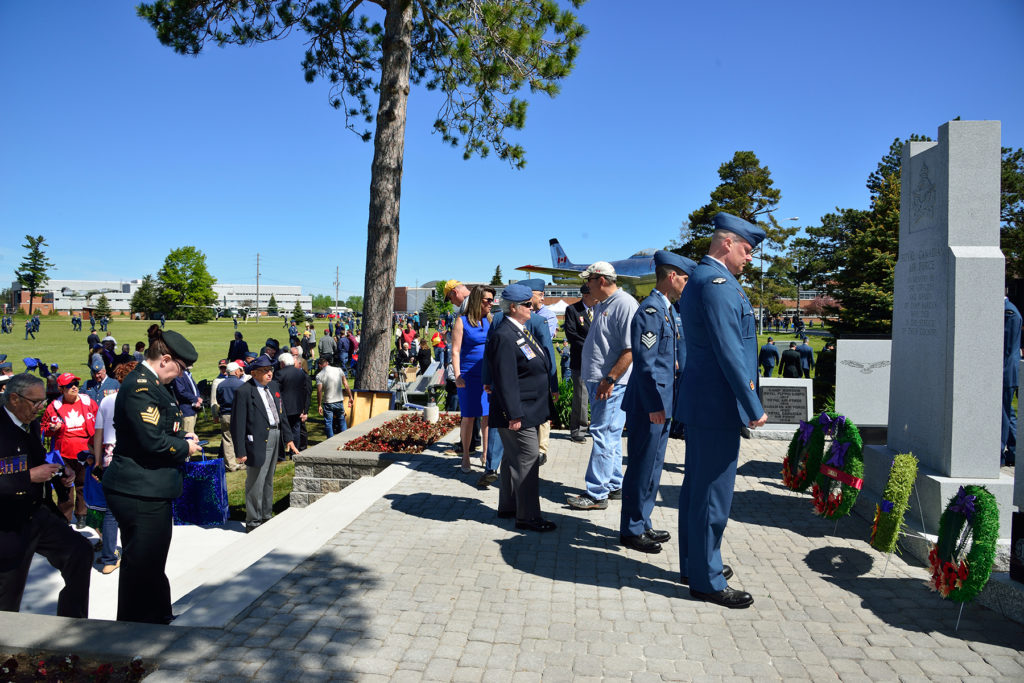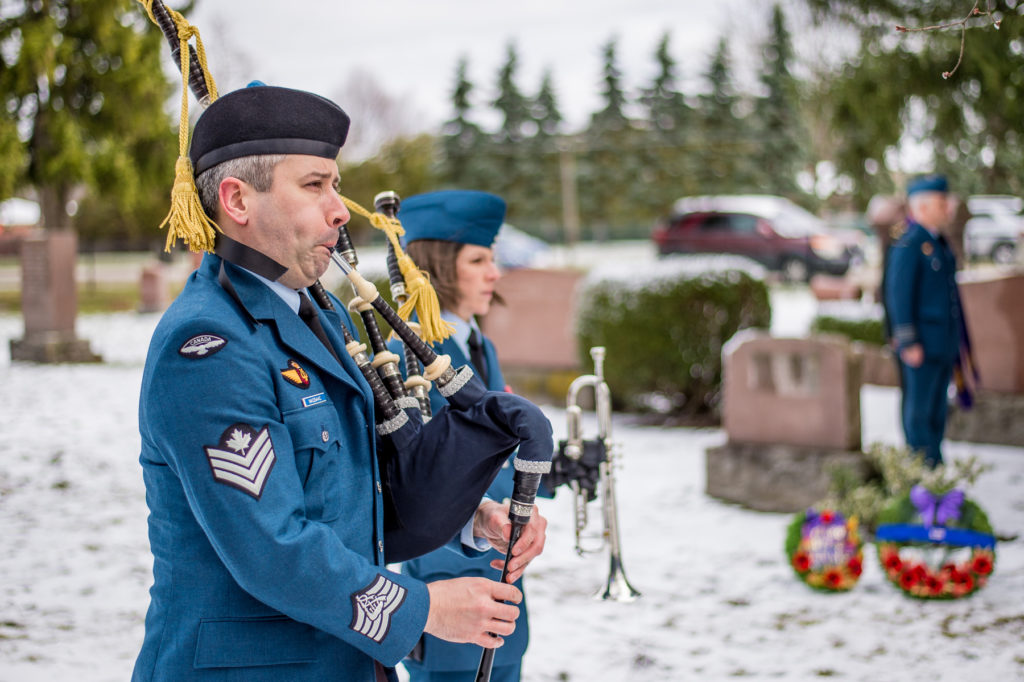Estimated reading time 5 minutes, 46 seconds.
16 Wing Borden, Ont., has been marking the 100th anniversary of the Royal Flying Corps (Canada) with various ceremonies and celebrations in 2017 – events also paying tribute both to 100 years of Air Force training at Borden, and to military aviation in Canada.

Under the direction of 16 Wing commander Col Andrew Fleming, members of the wing travelled to Dorchester, Ont., on April 7, 2017, to provide a Guard of Honour to mark the 100th anniversary of the death of Cadet James Harold Talbot. The Royal Flying Corps (Canada) aviation student died in the crash of his Curtiss JN-4 trainer aircraft at Camp Borden on April 8, 1917. He was the first fatal casualty of military aviation in Canada.
His death is tied to the original wording on the RCAF Cairn across from the Maple Officers’ Mess in Borden: “In memory of the Officers and Airmen of Camp Borden who died in the service of their country.”
On May 2, 2017, 16 Wing held an Honours and Awards parade at the Canadian Forces School of Aerospace Technology and Engineering (CFSATE) to mark the 100th anniversary of the official opening of the airfield at Camp Borden.

As noted above, though, flying actually started in March 1917. The Royal Flying Corps (Canada) operation eventually reached Brigade strength of 12,000 personnel, 7,453 of which were mechanics. The infrastructure included seven airfields, an engine repair park, an airframe repair park, a supply depot, a mechanical transport section, and several schools. More than 2,500 pilot graduates travelled overseas to fight during the First World War.
The major celebration of the 100th anniversary of the Royal Flying Corps (Canada) took place during the weekend of June 2 and 3, 2017. On June 2, a meet and greet was held at CFSATE at Borden, where members of the Air Force, past and present, gathered to share stories about their time in uniform and to listen to ‘Jet Stream,’ the RCAF’s famous show band.
The highlight of the evening was the welcoming of retired CWO Luc Tremblay and retired Maj Guy Janssens as members of 16 Wing’s Fellowship group. They were selected for this singular honour because they had done so much for the Air Force during their careers and are now doing even more for their local communities.
On June 3, a “Brigade” of airmen and airwomen paraded under the direction of parade commander LCol Russ Defer, 16 Wing chief of staff and commanding officer of the RCAF Academy. The commander of 2 Canadian Air Division, BGen Dave Cochrane, was the reviewing officer for the parade and the rededication of the RCAF Cairn.

The parade included three flypasts by 2 Canadian Air Division aircraft, including a CT-142 Dash 8 navigational trainer, a CT-156 Harvard II trainer, and three CT-155 Hawk trainers. After the Cairn was “Rededicated in 2017 to all the men and women who have served Canada’s military aviation since 1917,” local dignitaries laid wreaths.
Dr. and Mrs. Tom McQueen, the parents of Capt Thomas McQueen, who died in a CF-188 training accident at 4 Wing Cold Lake, Alta., in November 2016, laid a wreath in memory of their son. They were very moved by the ceremony.
After the parade, guests and attendees were invited to the flight line for an open house, where they could get up close to the vintage aircraft that were on static display, as well as sit in the aircraft that are used by CFSATE to train the future technicians of the RCAF.
Other displays were manned by the RCAF Academy as well as personnel from Canadian Forces Base Borden, the Military Personnel Generation Training Group and the Canadian forces Recruiting Group.








